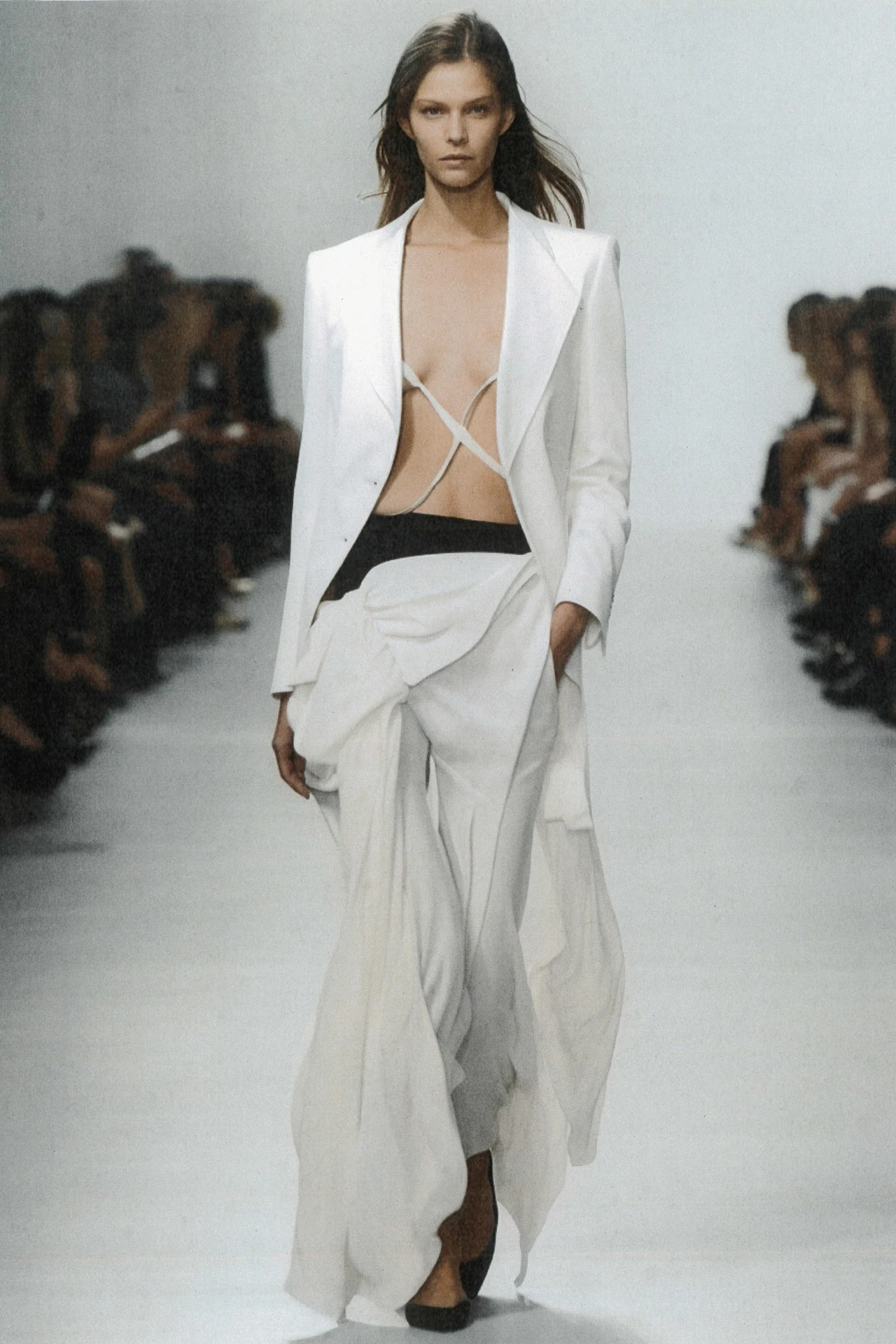Celebrity,6725,Ad Campaign,4875,Editorials,1895,Lookbook,1641,Fashion,1280,Awards,1114,Beauty,1080,Lingerie,538,Fashion Shows,528,Vogue,491,Swimwear,453,News,398,Cover,395,Victorias Secret,349,H and M,276,Dior,253,Oscars,248,Chanel,241,Elle,233,Gigi Hadid,186,Louis Vuitton,184,Footwear,183,Rihanna,175,Fragrance,166,Taylor Swift,166,Versace,159,Bella Hadid,157,Harper's Bazaar,157,Zara,152,Kate Middleton,144,Golden Globes,143,Selena Gomez,141,Emily Ratajkowski,140,Miranda Kerr,140,Gucci,139,Cara Delevingne,137,Free People,134,Met Gala,129,Jennifer Lopez,128,Irina Shayk,125,Health,123,Review,123,Mango,120,Dolce and Gabbana,119,Grammys,117,Calvin Klein,115,Jewelry,114,Karlie Kloss,114,Kristen Stewart,101,Alessandra Ambrosio,99,Jennifer Lawrence,99,Kaia Gerber,96,Michael Kors,92,Bella Thorne,86,MAC,86,Saint Laurent Paris,85,Valentino,85,Katy Perry,84,Marie Claire,84,Hailey Bieber,83,Rita Ora,82,Zendaya,81,Marc Jacobs,80,Gisele Bundchen,78,Prada,76,Emma Watson,75,General,75,Miu Miu,75,Margot Robbie,73,Vanity Fair,73,Dua Lipa,69,Rosie Huntington-Whiteley,69,Burberry,68,Candice Swanepoel,68,Jimmy Choo,68,Puma,68,Street Style,68,Givenchy,65,Kylie Jenner,63,Adriana Lima,62,GQ Magazine,62,Kate Upton,62,Sydney Sweeney,61,Balmain,60,Blake Lively,60,Cosmopolitan,60,Fendi,60,Alexander McQueen,59,Ariana Grande,59,Kendall Jenner,59,Coachella,58,Guess,58,Heidi Klum,58,Elsa Hosk,57,Sara Sampaio,57,Anne Hathaway,56,Megan Fox,56,Adidas,55,Emma Stone,55,Tommy Hilfiger,55,Behati Prinsloo,54,Kim Kardashian,54,Lady Gaga,54,Moschino,54,Coach,52,Fenty,52,Topshop,51,Sports Illustrated,50,DKNY,49,Elie Saab,49,Nina Agdal,49,Victoria Beckham,49,Glamour,48,Millie Bobby Brown,48,Vanessa Hudgens,48,Blackpink,47,Ashley Graham,46,Elle Fanning,46,Scarlett Johansson,46,Zimmermann,46,Barbara Palvin,45,Dakota Johnson,45,For Love and Lemons,45,Valentines Day,45,GIORGIO ARMANI,42,Massimo Dutti,41,Penelope Cruz,41,V Magazine,41,Angelina Jolie,40,Camila Cabello,40,Carolina Herrera,39,Max Mara,39,Nicole Kidman,39,Ralph Lauren,39,Amanda Seyfried,38,Eva Longoria,38,Stella Maxwell,38,W Magazine,38,Bulgari,37,Chloe,37,Jessica Alba,37,Juicy Couture,37,Naomi Campbell,37,Nasty Gal,36,karl Lagerfeld,36,Chrissy Teigen,35,Christian Louboutin,35,Jessica Chastain,35,Kate Hudson,35,Maxim,35,Priyanka Chopra,35,Victoria Justice,35,Balenciaga,34,Lily Collins,34,SKIMS,34,Swarovski,34,Charli XCX,33,Lily Aldridge,33,Miley Cyrus,33,Tiffany and Co.,33,Zuhair Murad,33,Billie Eilish,32,Ferragamo,32,Intimissimi,32,Martha Hunt,32,Meghan Markle,32,Nina Dobrev,32,Tom Ford,32,Toni Garrn,32,Tory Burch,32,Sarah Hyland,31,Emilio Pucci,30,Josephine Skriver,30,Kanye West,30,Lancome,30,Olivia Wilde,30,Oscar de la Renta,30,Paris Hilton,30,Shailene Woodley,30,Amber Heard,29,Anya Taylor-Joy,29,Bershka,29,Beyoncé,29,Charlize Theron,29,Dakota Fanning,29,Emma Roberts,29,Joan Smalls,29,Olivia Culpo,29,Sofia Vergara,29,Amy Adams,28,Beach Bunny,28,InStyle,28,L'Oreal,28,Pippa Middleton,28,Cardi B,27,Interview,27,Lupita Nyong'o,27,Nicole Scherzinger,27,Roberto Cavalli,27,Calzedonia,26,Celine,26,Florence Pugh,26,Jennifer Aniston,26,Lily-Rose Depp,26,Ashley Greene,25,Estee Lauder,25,Hailee Steinfeld,25,Halloween,25,Salma Hayek,25,The Body Shop,25,Vera Wang,25,Alberta Ferretti,24,Alexa Chung,24,Cate Blanchett,24,Emilia Clarke,24,JCrew,24,Keira Knightley,24,Kourtney Kardashian,24,L'Officiel,24,Sophie Turner,24,Stella McCartney,24,Stuart Weitzman,24,Venice Film Festival,24,Vivara,24,Agent Provocateur,23,Ariel Winter,23,Comic-Con,23,Emily Blunt,23,Emporio Armani,23,Loewe,23,Next,23,Reebok,23,Taylor Hill,23,Alexander Wang,22,Blumarine,22,Demi Lovato,22,Hugo Boss,22,Photo Shoot,22,Revolve Clothing,22,Sofia Richie,22,Diesel,21,Forever 21,21,Kate Spade,21,Lana Del Rey,21,Lottie Moss,21,Madame Figaro,21,Missoni,21,NARS,21,Proenza Schouler,21,Rag and Bone,21,Reese Witherspoon,21,Shay Mitchell,21,TOD'S,21,Tropic of C,21,Vivienne Westwood,21,Jenny Packham,20,Lais Ribeiro,20,Levis,20,Lindsay Lohan,20,Lucy Hale,20,Nike,20,Penshoppe,20,Stana Katic,20,kidswear,20,Cartier,19,Colcci,19,David Yurman,19,Diane Kruger,19,Esquire Magazine,19,Etro,19,Felicity Jones,19,Frankies Bikinis,19,GAP,19,Grazia,19,Jourdan Dunn,19,Kate Beckinsale,19,Khloe Kardashian,19,Lily James,19,Olivia Munn,19,Shakira,19,Shanina Shaik,19,Yamamay,19,urban outfitters,19,Ana de Armas,18,Bobbi Brown,18,Gal Gadot,18,Grace Elizabeth,18,Gwyneth Paltrow,18,Kelly Brook,18,La Perla,18,Lea Michele,18,Marks and Spencer,18,Natalia Vodianova,18,Stradivarius,18,Suki Waterhouse,18,Teen Vogue,18,Amal Clooney,17,Cindy Crawford,17,Halsey,17,Julianne Hough,17,Kaley Cuoco,17,Naomi Watts,17,Sabrina Carpenter,17,Self-Portrait,17,Skincare,17,Donna Karan,16,Halle Berry,16,Jasmine Tookes,16,Jenna Dewan,16,Julia Fox,16,Kate Bosworth,16,Kate Winslet,16,MAYBELLINE,16,Madewell,16,Nicki Minaj,16,i-D Magazine,16,Abbey Lee Kershaw,15,Bottega Veneta,15,Camila Morrone,15,Converse,15,Doja Cat,15,Emmy Rossum,15,Guerlain,15,Helen Flanagan,15,Herve Leger,15,Hunkemoller,15,Jean Paul Gaultier,15,Lila Moss,15,Maria Menounos,15,Nicola Peltz,15,Pepe Jeans,15,Urban Decay,15,Ciara,14,Hermes,14,Jenna Ortega,14,Kylie Cosmetics,14,Leni Klum,14,Numero,14,Olivia Rodrigo,14,Zoe Kravitz,14,Anitta,13,Banana Republic,13,Business,13,Chiara Ferragni,13,Demi Moore,13,Harry Styles,13,Jacquemus,13,Kenzo,13,Longchamp,13,Madison Beer,13,Monique Lhuillier,13,Nicky Hilton,13,Paris Jackson,13,Solid and Striped,13,bebe,13,videos,13,Armani Exchange,12,Burberry Prorsum,12,Elizabeth Olsen,12,Escada,12,Esprit,12,Flaunt Magazine,12,Furla,12,Iggy Azalea,12,Iris Law,12,Kirsten Dunst,12,Miss Sixty,12,Miss Universe,12,Mulberry,12,OPI,12,Paco Rabanne,12,Pamela Anderson,12,River Island,12,Rolling Stone,12,Temperley London,12,Toronto International Film Festival,12,TwinSet,12,Xti,12,Adut Akech,11,Clinique,11,Diane von Furstenberg,11,Ellie Goulding,11,Erdem,11,Ermanno Scervino,11,Imaan Hammam,11,Jason Wu,11,Kate Mara,11,Kristen Bell,11,Kurt Geiger,11,Lizzo,11,LoveShackFancy,11,Mariah Carey,11,Messika,11,Morena Rosa,11,Mugler,11,Neiman Marcus,11,Prabal Gurung,11,Reformation,11,Saoirse Ronan,11,Zadig and Voltaire,11,Aldo,10,Alice + Olivia,10,Amelia Gray,10,Bally,10,Brie Larson,10,Emma Chamberlain,10,Emma Corrin,10,Giambattista Valli,10,Graff Diamonds,10,Jeffrey Campbell,10,Kylie Minogue,10,LOVE Magazine,10,Marella,10,NakedCashmere,10,Peter Pilotto,10,RED Valentino,10,Reserved,10,Rimmel,10,Rosamund Pike,10,STEVE MADDEN,10,Shawn Mendes,10,The Sunday Times Style,10,Towel Series,10,scarves,10,Anna Kendrick,9,Aubrey Plaza,9,Bebe Rexha,9,Christina Hendrick,9,Claire Danes,9,Cushnie Et Ochs,9,Demi Rose,9,Desigual,9,Dsquared2,9,Giuseppe Zanotti,9,Gwen Stefani,9,Isla Fisher,9,Jeans,9,Jordyn Woods,9,Just Cavalli,9,PacSun,9,Pinko,9,Rachel Bilson,9,Serena Williams,9,shopbop,9,Accessorize,8,Ashley Tisdale,8,Becky G,8,Blanco,8,Brandon Maxwell,8,Charlotte Tilbury,8,DL1961,8,Deva Cassel,8,FKA twigs,8,Georgina Rodriguez,8,Julia Roberts,8,Kacey Musgraves,8,Lauren Sánchez,8,Maisie Williams,8,Maje,8,Marni,8,Naeem Khan,8,Ochirly,8,Phoebe Dynevor,8,Target,8,The Edit,8,Trussardi,8,Ulla Johnson,8,Viktor and Rolf,8,Wildfox,8,Wonderland,8,products,8,Agua Bendita,7,Alexandra Daddario,7,Alexis Ren,7,Bath and Body Works,7,Carrie Underwood,7,Cobie Smulders,7,Debby Ryan,7,Halle Bailey,7,Hello Kitty,7,House of Harlow 1960,7,Hunter Schafer,7,Jil Sander,7,Joey King,7,Karen Millen,7,LF Stores,7,La Senza,7,Loro Piana,7,Maya Jama,7,Miss World,7,Nordstrom,7,Olivia Palermo,7,Rachel Zegler,7,Revlon,7,Shape Magazine,7,Simkhai,7,Sportmax,7,The Kooples,7,Triumph,7,United Colours of Benetton,7,Vince Camuto,7,Yara Shahidi,7,nine west,7,Agua de Coco,6,Americana Manhasset,6,Armani Beauty,6,Bianca Censori,6,Bolon Eyewear,6,Bongo Jeans,6,Chopard,6,David Jones,6,Denim,6,Dove Cameron,6,Elisabetta Franchi,6,Elizabeth Debicki,6,Etam,6,Giveaway,6,Inamorata,6,Jennifer Love Hewitt,6,KKW Beauty,6,Lancaster Paris,6,Lucy Boynton,6,Mandy Moore,6,Marchesa,6,Maura Higgins,6,Michelle Keegan,6,Miss USA,6,NYX,6,Omega,6,Paul and Joe,6,Planet Blue,6,Pull and Bear,6,Replay,6,Rodarte,6,Schiaparelli,6,Theory,6,True Religion,6,Tutorial,6,Vero Moda,6,Vogue Eyewear,6,Wrangler,6,primark,6,Alexandre Vauthier,5,Allure,5,America Ferrera,5,American Eagle,5,Ana Locking,5,Animale,5,AnnaSophia Robb,5,Armani,5,Ashley Park,5,BCBG MaxAzria,5,Barbie Ferreira,5,BaubleBar,5,Benefit,5,Blugirl,5,CR Fashion Book,5,Carven,5,Cheap Monday,5,Cle de Peau Beaute,5,Coperni,5,Fitness,5,Flare Magazine,5,Good American,5,John Hardy,5,Karol G,5,Kat Graham,5,Lacoste,5,Lili Reinhart,5,Linda Farrow,5,Macy's,5,Make Up Academy,5,Mavi Jeans,5,Miranda Lambert,5,Narciso Rodriguez,5,Opening Ceremony,5,Redemption Choppers,5,Reed Krakoff,5,SERGIO ROSSI,5,Alix Earle,4,AllSaints,4,Altuzarra,4,Anthropologie,4,Ashley James,4,Avon,4,Boohoo,4,Bourjois,4,Camila Mendes,4,Christina Aguilera,4,CoverGirl,4,Dianna Agron,4,Elizabeth and James,4,Gal Floripa,4,H.E. by Mango,4,Helmut Lang,4,Hogan,4,Jackets,4,Jalouse,4,Jamie Chung,4,January Jones,4,Jill Stuart,4,Jordin Sparks,4,Julia Garner,4,Keke Palmer,4,Kohl's,4,Lindex,4,Lovers + Friends,4,Make Up For Ever,4,Mikey Madison,4,Nylon Magazine,4,Off-White,4,Paige Denim,4,Piaget,4,Reiss,4,Romwe,4,Samara Weaving,4,Too Faced Cosmetics,4,Vanessa Kirby,4,Acne,3,Alexander Vauthier,3,Alia Bhatt,3,Armani Jeans,3,BCBGeneration,3,Bergdorf Goodman,3,Beymen,3,David Koma,3,Debenhams,3,Devon Lee Carlson,3,Dolce Vita,3,ElevenParis,3,Emilia Wickstead,3,Essie,3,Filippa K,3,ICEBERG,3,IRO Jeans,3,Illamasqua,3,Interview Magazine,3,Karen Walker,3,Keds,3,Littlewoods,3,Lorde,3,Marc O Polo,3,Max Azria,3,Max Factor,3,Missguided,3,Natasha Lyonne,3,Patrizia Pepe,3,Paul Smith,3,Philipp Plein,3,Playing Fashion,3,Porter Edit,3,Reem Acra,3,Ruth Bell,3,Saks Fifth Avenue,3,Sami Sheen,3,Self Magazine,3,Sephora,3,Shampalove,3,Taylor Russell,3,Tezenis,3,The 2 Bandits,3,Uniqlo,3,XOXO,3,Alison Brie,2,Andres Sarda,2,Barney's,2,Billabong,2,Bonprix,2,Charli D'Amelio,2,Coca Cola,2,Dunhill,2,Elie Tahari,2,Emma Myers,2,Etude,2,FCUK,2,French Connection,2,Georges Chakra,2,Harry Winston,2,Hoodies,2,House of Holland,2,Jaeger,2,John Galliano,2,Joop,2,Kenneth Cole,2,Muse,2,Mustang,2,Nicole Benisti,2,Orla Kiely,2,Oroton,2,Osmoze,2,Oysho,2,Peter Hahn,2,Pierre Cardin,2,Pierre Hardy,2,Ralph and Russo,2,Rebecca Minkoff,2,Redemption,2,Rhian Sugden,2,Roger Vivier,2,Roland Mouret,2,Sam Edelman,2,Sergio Hudson,2,Shiseido,2,Sophia Webster,2,Tag Heuer,2,Telva,2,Tibi,2,VMAN,2,Vigoss,2,Zoey Deutch,2,Billboard,1,Elisabeth Moss,1,Elizabeth Hurley,1,Elsa Pataky,1,Liam Hemsworth,1,










































COMMENTS